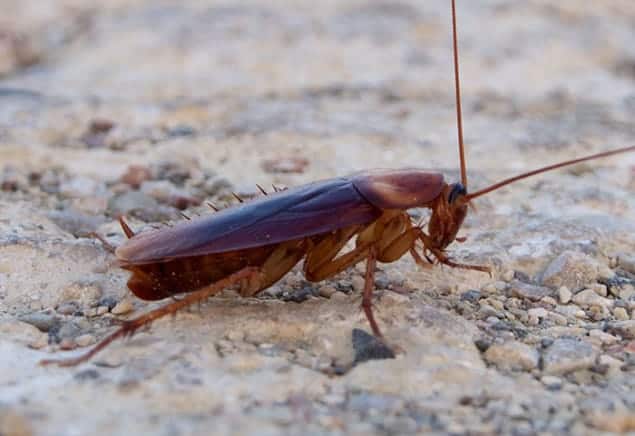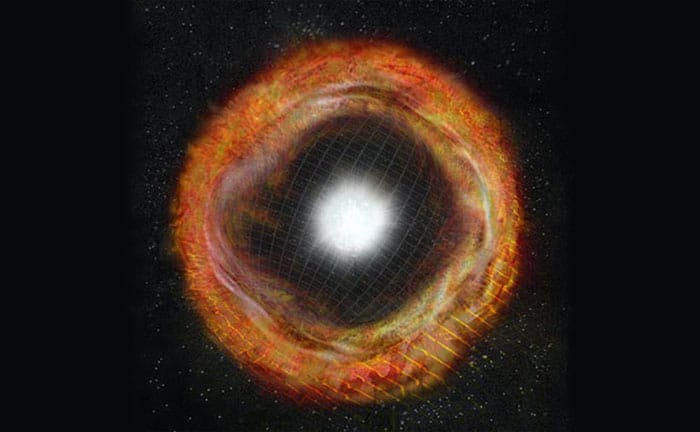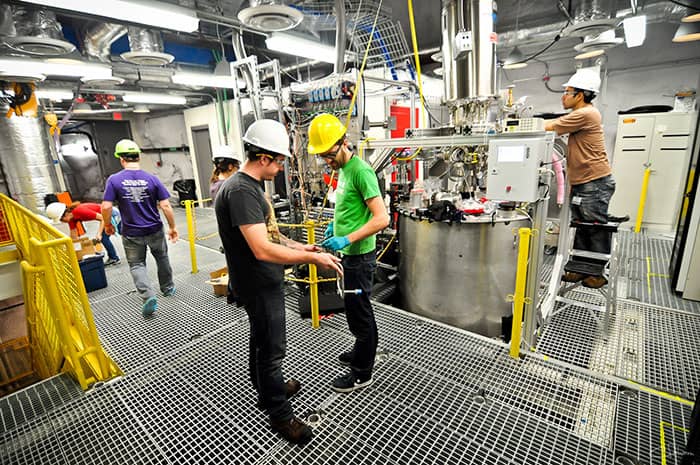Flash Physics: magnetizing cockroaches, a young supernova, construction begins on dark-matter detector
 Dead or alive: magnetism is different for dead and living cockroachesFlash Physics is our daily pick of the latest need-to-know developments from the global physics community selected by Physics World's team of editors and reporters
Dead or alive: magnetism is different for dead and living cockroachesFlash Physics is our daily pick of the latest need-to-know developments from the global physics community selected by Physics World's team of editors and reporters
Magnetizing cockroaches in life and death
Dead cockroaches have different magnetic properties compared to their living counterparts, according to Tomasz Paterek from Nanyang Technical University in Singapore and colleagues, who put groups of dead and alive cockroaches in a magnetic field of 1.5 kG, which is 100 times stronger than a fridge magnet. After 20 minutes, they measured the strength of magnetization and how long it took to decay. Although both types became magnetized, the dead cockroaches’ field decayed in roughly 50 hours while the process took barely 50 minutes for the living creatures. Using mathematical models, the researchers suggest that the magnetization is caused by magnetic iron-sulphide particles around 100 nm in diameter.
These become aligned with the external field and then lose alignment because of Brownian motion. The group attributes the different decay rates to the viscosity of the particle-containing medium inside the cockroaches. For the living bugs, this medium has a low, runny viscosity, while for dead cockroaches the medium begins to harden, consequently slowing the decay. As the magnetic sensing in living cockroaches is too slow for biological uses, the researchers suggest that it is used to influence chemical processes. Although questions remain, the study could help bioengineers to design new magnetic sensors. The preprint is available on the arXiv server.
These become aligned with the external field and then lose alignment because of Brownian motion. The group attributes the different decay rates to the viscosity of the particle-containing medium inside the cockroaches. For the living bugs, this medium has a low, runny viscosity, while for dead cockroaches the medium begins to harden, consequently slowing the decay. As the magnetic sensing in living cockroaches is too slow for biological uses, the researchers suggest that it is used to influence chemical processes. Although questions remain, the study could help bioengineers to design new magnetic sensors. The preprint is available on the arXiv server.
A 3 hour-old supernova has been observed
A star’s violent death has been caught on camera mere hours after it exploded. In October 2013, the fully automated Intermediate Palomar Transient Factory (iPTF) survey spotted the early stages of a type II supernova in a nearby galaxy. A supernova is the last, dramatic stage of massive star’s life. Type II is the most common category of supernova and occurs when a star 8–40 times more massive than the Sun has collapsed under its own gravitational fields and then exploded. Spectra of type II supernovae also show the presence of hydrogen, but astronomers know little about the evolution and environment of these massive stars before they explode, as it requires witnessing the very early stages of the supernova and such events are extremely rare. So once iPTF spotted the event only three hours after it occurred, researchers jumped at the opportunity to perform tests on the young supernova. These included X-ray, ultraviolet, infrared and visible-light photometry and spectroscopy. Ofer Yaronfrom the Weizmann Institute of Science in Israel and colleagues report the findings in Nature Physics. As the supernova was in its early stages, the scientists were able to spot dense debris encircling the star – something that was not predicted by current stellar models. Although they admit several scenarios could explain the surrounding debris, the researchers suggest that the star, a red supergiant, had been rapidly ejecting material over the year before it exploded. “It’s as if the star ‘knows’ its life is ending soon,” says Yaron. Over five days the material was completely swept away by the explosion. As type II supernovae are the most common, the observations made by Yaron and colleagues suggest that all massive stars may be unstable prior to their dramatic demise.
Construction begins on dark-matter detector
The US Department of Energy (DOE) has given the green light for construction of the LUX-ZEPLIN dark-matter detector to start. Located around 1.6 km underground at the Sanford Underground Research Facility in Lead, South Dakota, the experiment will search for weakly interacting massive particles – a leading dark-matter candidate – by using a tank filled with 10 tonnes of ultra-pure liquid xenon. If a dark-matter particle collides with a xenon atom, it will then produce a flash of light that is picked up by around the 500 light-amplifying tubes lining the tank. LUX-ZEPLIN is expected to be around 50 times more sensitive than its predecessor, the Large Underground Xenon experiment. The start of construction comes after the DOE granted the experiment “critical decision 3”, which accepts the final design and allows building work to begin. The DOE’s Lawrence Berkeley National Laboratory is leading the construction of the facility, which includes around 220 participating scientists from 38 institutions around the world. LUX-ZEPLIN is expected to start operation in April 2020.
You can find all our daily Flash Physics posts in the website’s news section, as well as on Twitter and Facebook using #FlashPhysics.
9/9/2018 FROM PHYSICSWORLD.COM


Δεν υπάρχουν σχόλια:
Δημοσίευση σχολίου